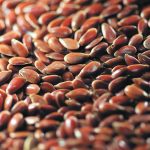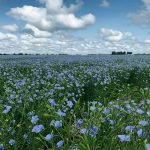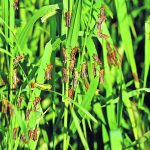Ag Canada expects 275,000 tonnes of stocks to start 2023-24 crop year, which is more than a typical export program
Flax growers shouldn’t expect much price action in the new crop year, according to traders. Prices have levelled off after plunging 36 percent in 2022-23 and that is likely where they will remain. Old and new crop bids for brown flax are around $14 per bushel f.o.b. farm for movement before harvest, according to a […] Read moreFlax

Producer input sought on proposed flax-canola merger
Two Saskatchewan oilseed commissions are seeking feedback from growers on a possible amalgamation. The Saskatchewan Canola Development Commission and the Saskatchewan Flax Development Commission sent notices in the mail to farmers asking them to participate in an online survey. “Mostly, we want to find out if there’s any major concerns that maybe our boards haven’t […] Read more

Court finds emoji works as contract acceptance, signature
Judge orders Sask. farmer to pay for grain he failed to deliver, even though he didn’t provide a contract signature
The King’s Bench decision in early June drew international attention, with many questioning how a single emoji could be interpreted as a binding signature.
Flax prices not expected to increase
Agriculture Canada is forecasting there will be 275,000 tonnes of stocks to start the 2023-24 crop year, which is more than a typical export program of late.

Taking a deeper dive into seeded acreage report
Here is some analysis of the Statistics Canada seeded acreage report you may not have seen elsewhere. The overall canola acreage is a bit higher than many expected at slightly more than 22 million acres, an increase of 3.2 percent over last year. Interestingly, canola acreage dropped by 4.7 percent in Manitoba and 2.4 percent […] Read more

Pooled resources benefit specialty crop research
The Diverse Field Crops Cluster works with camelina, carinata, canaryseed, flax, hemp, mustard, quinoa and sunflowers
After five years of research through a time that included a drought and a pandemic, the Diverse Field Crops Cluster has issued a report on its achievements. Carol Ann Patterson, DFCC project manager, said researchers showed their resourcefulness in keeping projects going despite health restrictions. “People were shut down for a year sometimes or with […] Read more
Companies collaborate on intercropping research
The program seeks to learn the impact of regenerative farming on soil health, biodiversity and nutrient density. The hope is to create a blueprint for farmers.

Grasshoppers out early
Farmers are urged to make sure they are dealing with a pest variety of hopper before they decide to spray.
“The good news is if you have millions you don’t have to know (which species),” said Dan Johnson from the University of Lethbridge. “If you have millions, they are definitely pests. None of the naturally occurring ones out on the rangeland that feed birds and participate in the ecosystem ever form millions.”

Flax area expected to be smallest since 1950
Statistics Canada expects 689,000 acres of the crop will be planted this spring, an 11.6 percent drop from a year earlier
Greg Sundquist, chair of the Saskatchewan Flax Development Commission (SaskFlax), said flax is disease resistant compared to canola, as well as cheaper to grow and can be quite profitable. He said the lack of flax acres will become a temporary setback.
Uncertainty throws cold water on organic market
Producers who came in when prices were high are now leaving the business; some say sector has lost one million acres
There is plenty of uncertainty in the organic market, and processors are hesitant to do much forward contracting of crops.



